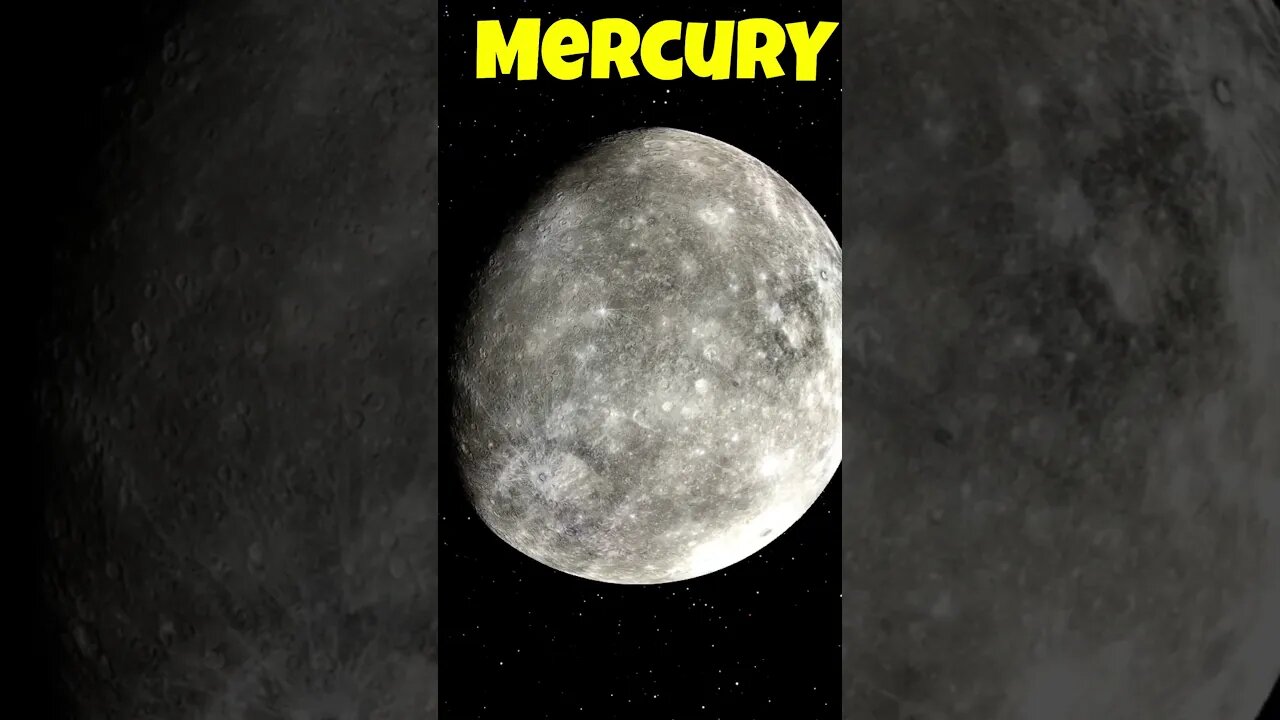Premium Only Content

What Planet is Closest to Earth on Average? | Space Trivia
Mercury Is Actually the Closest Planet to Every Other Planet
Numerous websites, and even NASA itself, say Venus is our closest planetary neighbor. A new article in Physics Today lays out a more accurate way to determine which planets are closest together.
If someone asks you what planet is closest to Earth, you'll probably blurt out Venus. That's a perfectly normal thing to say, but it's also wrong. Numerous websites and even NASA itself say Venus is our closest planetary neighbor. A new article in Physics Today lays out a more accurate way to determine which planets are closest together. It turns out the averages are highly counterintuitive. Mercury (above) is the closest planet to Earth -- in fact, it's the closest planet to every other planet. This is startling because we all have a built-in misconception about the layout of the solar system. It's true that Venus orbits the sun between Earth and Mercury. The distance from Earth to the sun is 1 astronomical unit (AU), and Venus is 0.72 AU from the sun. With a little arithmetic, you might think that Venus is just 0.28 AU from Earth. That's true only for a very short period in Venus' orbit. The rest of the time, it's much farther away.
The new analysis includes a model that tracks all the planets over the course of 10,000 Earth years. It assumes that planetary orbits are roughly circular and that all planets orbit on the same plane. That's close enough to true that the new rankings are accurate. The researchers call this method of measurement the point-circle method (PCM). It considers the distance between two planets to be the average distance between all points along their respective orbits. Thus, Mercury's orbit doesn't take it very far from the sun, but Venus gets much farther away from Earth during its orbit. While it gets closer on occasion, it can be as far away as 1.72 AU. Based on PCM, Mercury is closer to Earth almost 50 percent of the time, with the remainder split between Mars and Venus. Therefore, Mercury is closer.
It gets weirder -- the same principle holds true for all the planets. Even Neptune, some 30AU from the sun, is closer on average to Mercury than Uranus, which orbits at 19 AU. Just like Earth and Venus, these two planets spend a great deal of their time on opposite sides of the solar system, even though their orbits eventually bring them within a few AU of each other. What about weird objects like Pluto? Well, that's not a planet, but there might be a similar correlation. However, it doesn't fit in the PCM model because Pluto orbits on a different plane and crosses the orbit of Neptune.
Social Links
YouTube: https://www.youtube.com/channel/UC4lzZ4Tyhkzl582_5jqW3rA
Rumble: https://rumble.com/user/WhatsNextVids
TikTok: https://www.tiktok.com/@whatsnextvids?lang=en
Twitter: https://twitter.com/WhatsNe75388303
ODYSEE: https://odysee.com/@WhatsNext:5?view=content
Support Me
Patreon: https://www.patreon.com/user?u=37594401
Buy Me A Coffee?: https://www.buymeacoffee.com/whats.next
Donate With Cash App: https://cash.app/$YTpayments
-
 2:16:18
2:16:18
Side Scrollers Podcast
2 days agoCONTENT NUKE GOES LEGAL, AI To REMAKE Classic Movies, Walter Day Interview | Side Scrollers Live
68.1K14 -
 LIVE
LIVE
Lofi Girl
2 years agolofi hip hop radio 📚 - beats to relax/study to
510 watching -
 49:01
49:01
Anthony Pompliano
2 days ago $7.03 earnedBitcoiners Built Tether Into The Most Profitable Company Ever
41.7K7 -
 1:49:44
1:49:44
Russell Brand
4 days agoTerrence Howard’s SHOCKING New Theory of Reality - SF599
240K75 -
 6:36:43
6:36:43
DopeFrags
7 hours agoWe're just gamin'.. | Dope After Dark
11.9K -
 LIVE
LIVE
EleMentalMJ
5 hours agoSUNDAY FUNDAY! - Variety Gaming Stream
61 watching -
 15:40
15:40
TimcastIRL
17 hours agoDemocrat Party Is DONE, Donors FLEE As Dems Face Approval Rating DISASTER
67.9K136 -
 2:44:38
2:44:38
Laura Loomer
10 hours agoEP128: Iran's Nuclear Program Goes BOOM
159K172 -
 3:20:44
3:20:44
Badlands Media
1 day agoThe Narrative Ep. 27 - A Spectacular Success
127K21 -
 1:21:56
1:21:56
Man in America
19 hours agoExposing Big Pharma’s #1 WEAPON for Keeping You SICK w/ Dr. Edward Group
80.9K27